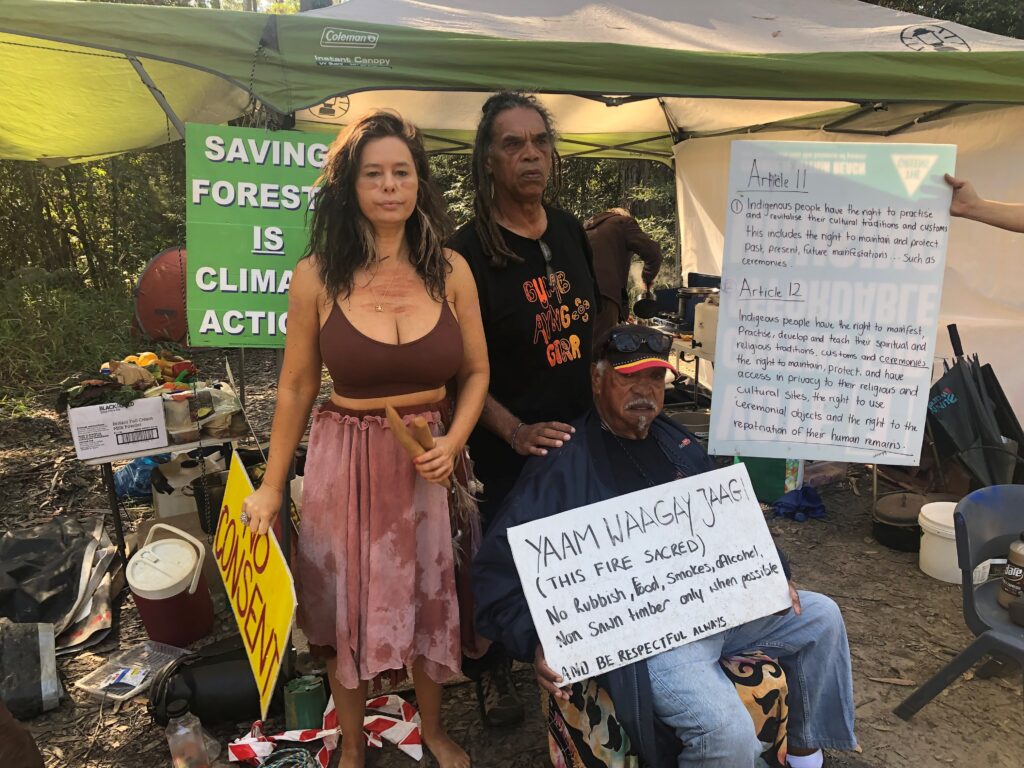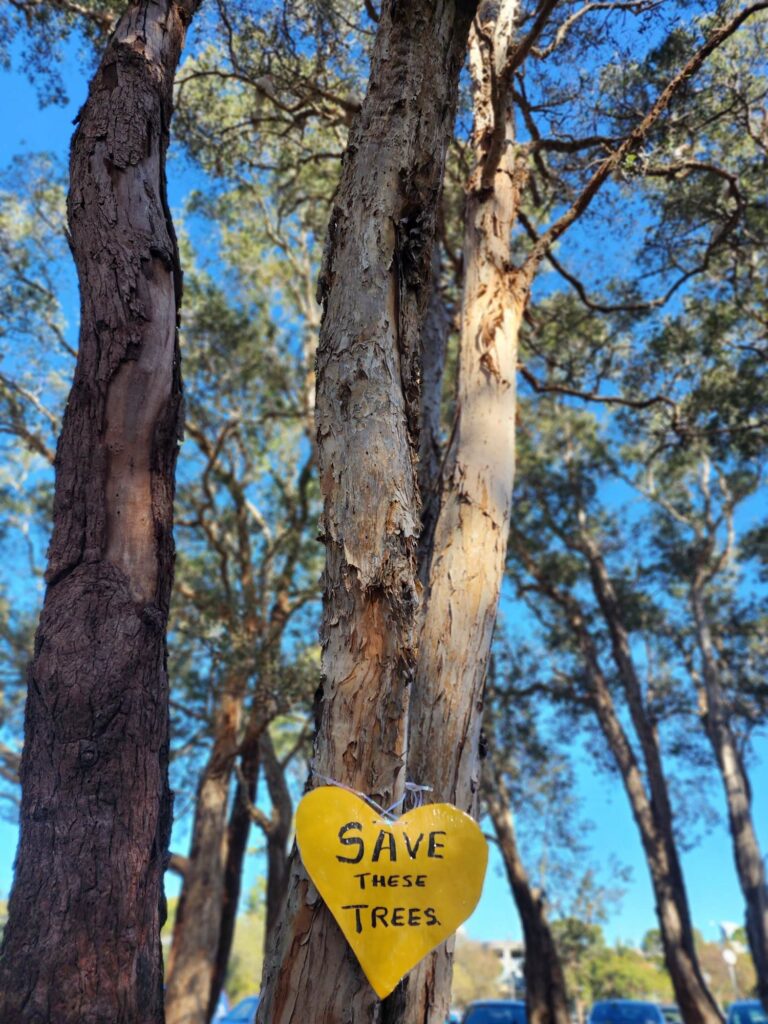The Nature Conservation Council of New South Wales (NCC), the states leading environmental advocacy organisation, has condemned targeted and intensive logging of forests within the proposed Great Koala National Park (GKNP) by Forestry Corporation of NSW (FCNSW).

Newry State Forest on the Mid-North Coast (10km west of Urunga) is the most recent target of these operations inside the proposed GKNP.
Compartments 21,22,26,27,28 (total area 657ha) of Newry are now ‘Active’, as shown on the FCNSW CIFOA Plan Portal.
This forest contains a well-known koala population, with three mapped koala hubs within of directly bordering Newry. FCNSW are also at the ‘Planning’ stage to log Newry compartments 23,24,25 (528ha total area).
It has very high cultural significance and value to the Gumbaynggirr people as part of the Nunngguu Mirraarl (Golden Kangaroo) dreaming/songline landscape.
The plan to log these compartments is a direct threat to the integrity of this crucial cultural landscape. Gumbaynggirr elders have called for the protection of sacred sites in and around Newry State Forest.
In a clear response to community opposition, locked steel gates have been established at every entrance of the forest with security guards present 24/7 with routine police visits.
Local first nations and community groups are gearing up for a long fight to protect this forest, which is a sign of the significance it has ecologically and culturally.
A protest camp has been established at the entrance to Newry.
NCC Chief Executive Officer Jacqui Mumford said: “To lock out traditional owners from their own forest is shameful behaviour from Forestry.
“To see Elders and custodians being physically dragged away to allow logging of their sacred sites to occur under police guard is a new low, even for FCNSW.
“They have a duty to consult and listen to first nations people, which they have clearly failed at. FCNSW has gone rogue, and they must be reined in at Newry, and across the entire state.
“This is occurring within months of a historic referendum for Indigenous rights in this country. When will we learn to listen?
“Forestry Corp is taking a wrecking ball to the proposed Great Koala National Park. This smash and grab before the area is protected must be stopped to ensure we have koalas left to protect.
“31,000 hectares of forest are currently slated for logging within the boundaries of the proposed GKNP over the next 12 months. This represents nearly 18 per cent of the entire area proposed for gazettal to form the GKNP.
“These are our public forests, and the public overwhelmingly does not support this industry. This industry has no social license at all. The frequency and staggering number of arrests occurring in our public native forests protesting logging paints a very clear picture of this.
“Forests in NSW are incredibly carbon rich, which means they are also big emitters when destroyed. 3.6 million tonnes of carbon are released every year through native forest logging in NSW, the equivalent of 840,000 cars. Protecting them for their carbon value would be a huge step towards achieving NSW’s emissions targets.”
NCC has called on the NSW Government to act on its commitment to stop the runaway land clearing that is decimating NSW bush.
The latest land clearing data shows that land clearing continues to devastate large swathes of vegetation every year. In NSW, an equivalent of 350 times the CBD is cleared annually, or 640 football fields per day.
The annual Statewide Land and Tree Study (SLATS) data shows an average of 95,000 hectares of native vegetation was cleared across the state every year for the past four years.
Over half of this is ‘unallocated’ or unexplained clearing that may or may not be legal.
The data shows that land clearing from agriculture continues to have a huge impact on the state’s biodiversity.
Agricultural clearing of ‘woody vegetation’ has increased 15 per cent; and ‘non-woody vegetation’ clearing for agriculture has increased approximately 5 per cent between 2018 and 2020. 3095 hectares of sensitive and vulnerable regulated land was cleared in 2021 alone.
Clearing of native vegetation, and the destruction of habitat associated with it is the single greatest threat to biodiversity in NSW.
Clearing is generally irreversible because of the ongoing nature of land uses change. Clearing can directly impact, kill and displace native animals and plants. Over time, the effects of fragmentation and disturbance can lead to invasion by weeds and further deteriorate the condition and habitat values of the remnant vegetation.
“The new figures show a regulatory framework that is unfit for purpose,” said Mumford. “Land clearing laws in NSW are unable to rein in runaway land clearing and urgently need reform.
“The land management framework is currently under review,” she said. “The NSW Government has an opportunity to have a real impact on biodiversity loss by fixing the mistakes made in 2016 when the laws were loosened to allow an incomprehensible expansion of private land clearing across the state.
“After the government weakened land clearing laws in 2016, deforestation rates tripled and since then runaway land clearing continues apace.
“The existing Native Vegetation Code is an inappropriate regulatory tool for managing impacts on biodiversity in rural areas. It permits a completely unsustainable amount of clearing without any robust environmental assessment or approval requirements.
“The scope of allowable vegetation clearing activities is too broad and open to misuse. Not only that, we have this huge amount of land clearing that can’t be explained. We don’t know whether or not this land clearing is allowable under even the current ineffective regulations.”
54.6 per cent of non-woody vegetation clearing is unallocated & 6.4 per cent of woody vegetation clearing is unallocated.
Unallocated land clearing is defined as vegetation clearing for which the Department of Planning and Environment has not been able to identify a formal authorisation or is unable to presume authorised using visual cues in the imagery.


